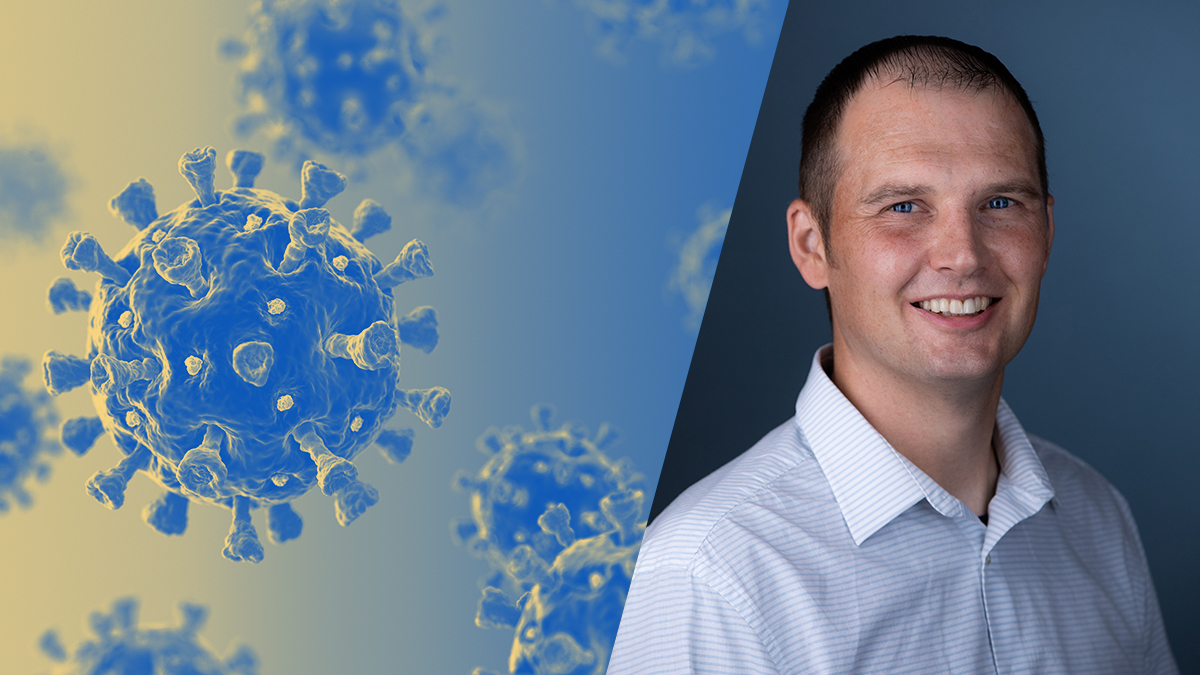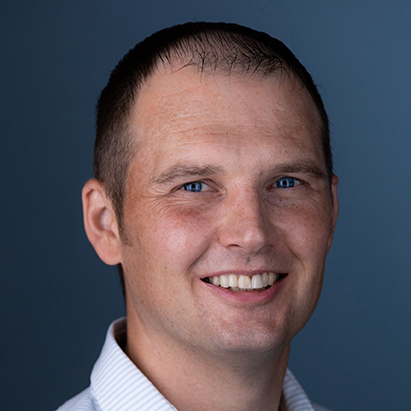KU lab leads research on little-studied coronavirus structure, developing antiviral treatment

LAWRENCE — Back in early 2020, University of Kansas virologist Anthony Fehr was part of a relatively small community of researchers in the world studying coronaviruses. Then the COVID-19 pandemic struck, and his niche research area exploded on a global scale. Fehr appeared on television shows and in newspaper articles as a leading expert to help the public understand the novel coronavirus and its disease.
"It was weird being in the spotlight,” said Fehr, who is more accustomed to spending time in the laboratory. “All of a sudden, everybody cared about this, and you have bright lights shining on you.”
Fehr began studying coronaviruses as a postdoctoral researcher at the University of Iowa, where he focused on a little-studied structure called the macrodomain. Now a decade later, his lab at KU is in the process of creating the first antiviral therapeutic drug targeting the macrodomain amid the rapid influx of attention the group of viruses is receiving.
“While we understand a little bit more than we did 10 years ago, there’s still a lot of work to do,” said Fehr, assistant professor of molecular biosciences and investigator with the Higuchi Biosciences Center.
The macrodomain is an enzyme essential in causing disease because it counters the host’s innate immune response. This makes it a new and unique target for drug discovery because it focuses on immune response, whereas current therapeutics inhibit viral replication.
The lab’s studies have shown that without the macrodomain protein, coronaviruses — including SARS-CoV-2 and MERS-CoV — replicate poorly and don’t cause disease in animal models of infection.
In April 2020, Fehr characterized and published the first description of the SARS-CoV-2 macrodomain, which helped the scientific community better understand the virus and how it functions.
“There's a lot that we don't understand about this interaction between the virus and the host,” said Fehr, who came to KU in 2018 as an investigator in the Chemical Biology of Infectious Disease Center of Biomedical Research Excellence. “I’m driven to uncover new aspects of that every day.”
The National Institutes of Health recently renewed support for CBID with a five-year, $11.35 million grant to continue biological research for drug therapies. With the prevalence of coronaviruses and the likelihood of others to emerge, a wide range of therapeutics can help combat current viruses and prevent future outbreaks.
“Getting a bigger picture of how the virus works in general will help us develop better strategies to target it,” Fehr said.
In May, the lab performed an initial study of 38,000 compounds in collaboration with KU’s Infectious Disease Assay Development core laboratory, directed by Anu Roy. Results showed six potential candidates that Fehr’s lab continues to study and develop.
“It was very exciting to be able to identify inhibitor candidates for SARS-CoV-2,” Roy said. “Using our novel assay, we hope to obtain funding to support larger screening campaigns to identify more compounds targeting the macrodomain. These compounds have the potential to function as first-class antivirals.”
Fehr is submitting a National Institutes of Health Research Project Grant (R01) to continue developing inhibitors for the macrodomain. He and his collaborators are also writing a manuscript describing their efforts to understand and target the macrodomain.

"The idea of developing this inhibitor for this enzyme was not something I would have done probably at most other places. And, so now I’m like, 'We have the opportunity, let’s get it done.'"
Many researchers have flocked to the field to advance understanding of coronaviruses. More than 88,400 articles that included the term “coronavirus” were published in 2021, compared to 906 in 2019, based on a search of the PubMed database for biomedical literature. Despite the increased competition for funding and discovery, Fehr welcomes the wealth of information being generated in the quest to combat the viruses.
“In all aspects of this battle, we’re not going to be finished in the next few years,” he said. “We’ve set up our research program to be long-lasting, and we’re going to have things to work on for the next decade or more on this topic.”
In addition to his research at KU, Fehr is a project leader at the Center for Development of Macrodomain Inhibitors for Coronavirus and Alphavirus Treatment at Johns Hopkins University. The center aims to research and develop antiviral treatments targeting the macrodomain in coronaviruses and alphaviruses.
Fehr’s lab has also collaborated with other KU researchers at the university’s Structural Biology Center, its Chemical Biology Core, and its Protein Structure & X-Ray Crystallography Laboratory. Fehr credits his ability to pursue more impactful research to KU’s Center of Biomedical Research Excellence program. KU has two NIH-designated COBRE centers.
“Having these core facilities has really enhanced my research and our capabilities in the lab to do these types of experiments and hopefully have a bigger impact on society than I might have just doing basic research,” Fehr said. “The idea of developing this inhibitor for this enzyme was not something I would have done probably at most other places. And, so now I’m like, ‘We have the opportunity, let’s get it done.’”
“Dr. Fehr’s pursuit of novel small molecule inhibitors of the macrodomain was enabled by KU COBRE centers and core laboratories, a testament to their importance to the research mission of KU,” added Erik Lundquist, professor of molecular biosciences and associate vice chancellor for research. “His work on the coronavirus macrodomain could not be more timely and important for controlling SARS-CoV-2 and other potentially infectious coronaviruses in the future.”
Indeed, Fehr has an eye on the advances of tomorrow while reveling in the thrill of today’s discoveries.
“I want our lab to continue to bring in new students and drive the next era of scientists,” Fehr said. “At the end of the day, I’m also just really interested in this enzyme and this whole process of uncovering new biology every few weeks or months. Scientists live at the edge of what’s known and what’s not known. Anytime you push into the ‘not known’ part, you make that known. I find that really fascinating and really fun.”